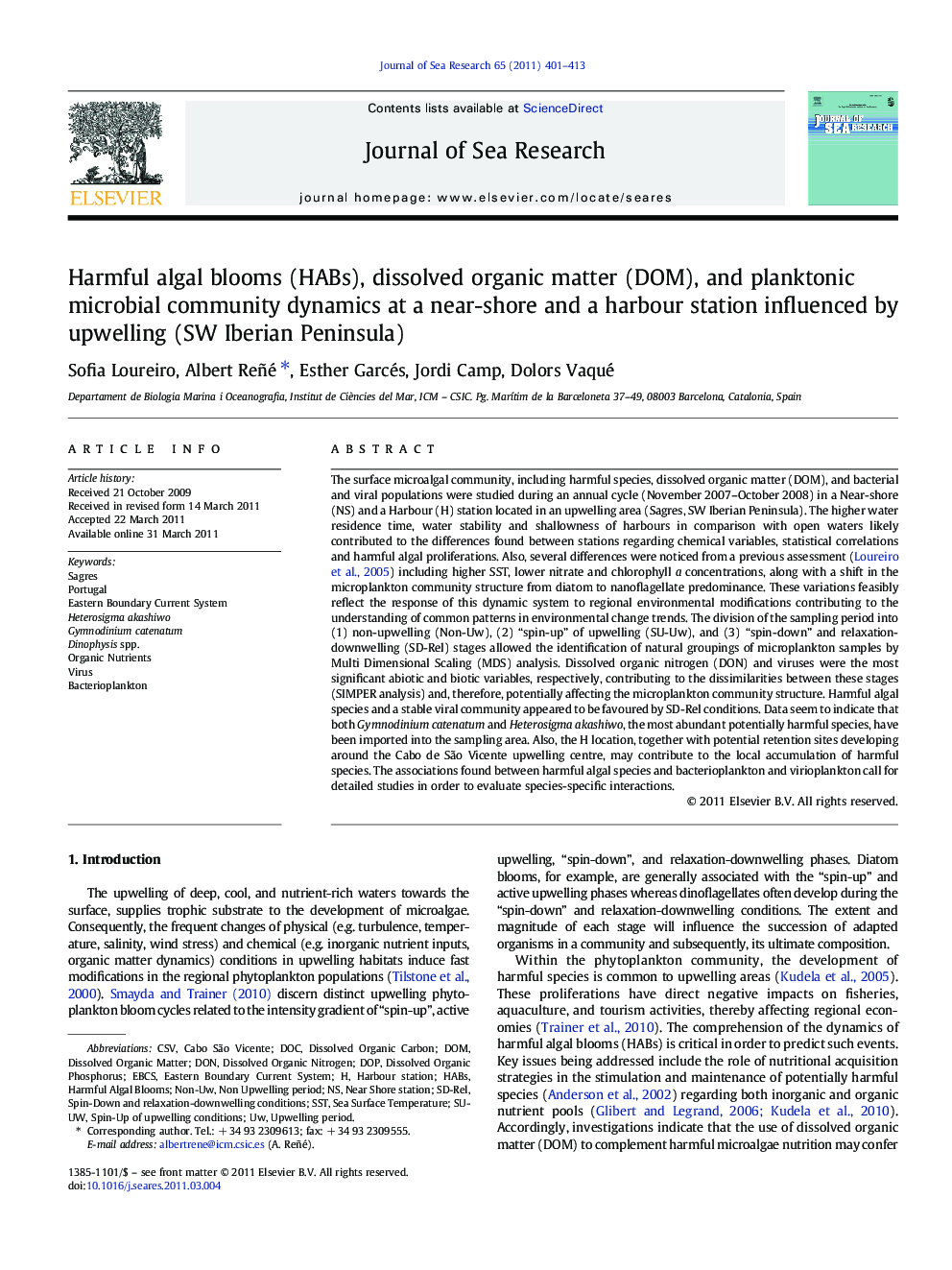| کد مقاله | کد نشریه | سال انتشار | مقاله انگلیسی | نسخه تمام متن |
|---|---|---|---|---|
| 4550146 | 1328133 | 2011 | 13 صفحه PDF | دانلود رایگان |

The surface microalgal community, including harmful species, dissolved organic matter (DOM), and bacterial and viral populations were studied during an annual cycle (November 2007–October 2008) in a Near-shore (NS) and a Harbour (H) station located in an upwelling area (Sagres, SW Iberian Peninsula). The higher water residence time, water stability and shallowness of harbours in comparison with open waters likely contributed to the differences found between stations regarding chemical variables, statistical correlations and harmful algal proliferations. Also, several differences were noticed from a previous assessment (Loureiro et al., 2005) including higher SST, lower nitrate and chlorophyll a concentrations, along with a shift in the microplankton community structure from diatom to nanoflagellate predominance. These variations feasibly reflect the response of this dynamic system to regional environmental modifications contributing to the understanding of common patterns in environmental change trends. The division of the sampling period into (1) non-upwelling (Non-Uw), (2) “spin-up” of upwelling (SU-Uw), and (3) “spin-down” and relaxation-downwelling (SD-Rel) stages allowed the identification of natural groupings of microplankton samples by Multi Dimensional Scaling (MDS) analysis. Dissolved organic nitrogen (DON) and viruses were the most significant abiotic and biotic variables, respectively, contributing to the dissimilarities between these stages (SIMPER analysis) and, therefore, potentially affecting the microplankton community structure. Harmful algal species and a stable viral community appeared to be favoured by SD-Rel conditions. Data seem to indicate that both Gymnodinium catenatum and Heterosigma akashiwo, the most abundant potentially harmful species, have been imported into the sampling area. Also, the H location, together with potential retention sites developing around the Cabo de São Vicente upwelling centre, may contribute to the local accumulation of harmful species. The associations found between harmful algal species and bacterioplankton and virioplankton call for detailed studies in order to evaluate species-specific interactions.
Research Highlights
► HABs, DOM, and microbial communities were studied in an upwelling area.
► Upwelling stage identification allowed detection of microalgae natural groupings.
► DON and viruses appear to influence the microalgae natural groupings.
► Harmful algal species were favoured by relaxation-downwelling stages.
► Import and retention sites seem important for HAB occurrence in the area.
Journal: Journal of Sea Research - Volume 65, Issue 4, May 2011, Pages 401–413